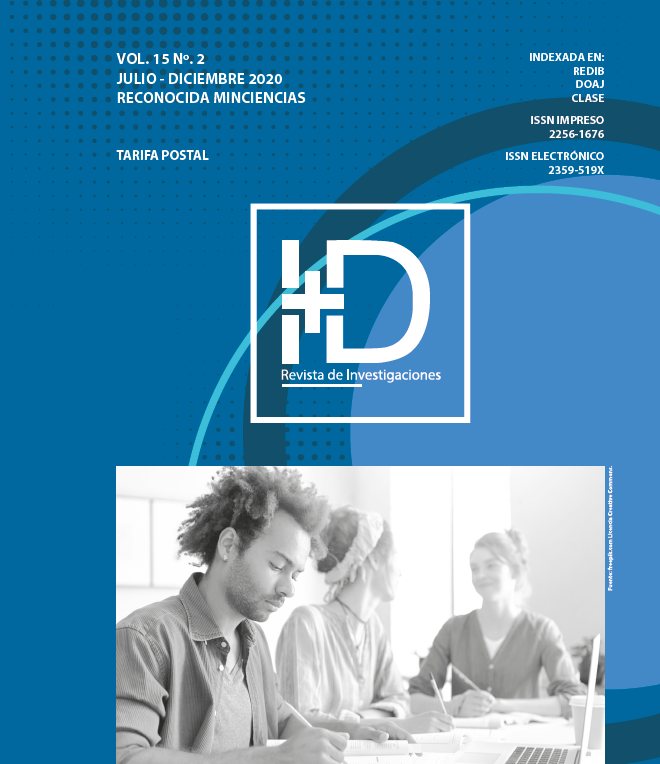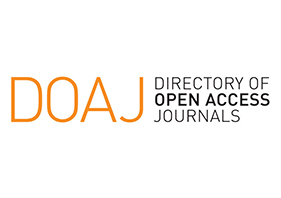Influence of financial education programs on the behavior of young people: a literature review
DOI:
https://doi.org/10.33304/revinv.v15n2-2020002Keywords:
Curriculum, financial education, financial literacy, secondary educationAbstract
Due to the evident need to educate economically and financially to the population, strategies and programs have been implemented in different parts of the world, that allow developing the financial knowledge and behavior of young people. However, few studies allow us to extract significant evaluations of the impact of these programs on the transformation of the habits and behaviors of young people in financial matters. Therefore, this article seeks to recognize the dynamics of publication of these studies, as well as to identify, through the results of the different investigations, the main financial behaviors that young people manage to change through financial education programs implemented in educational institutions globally. The results of this research reveal that, in effect, the implementation of these programs generates positive changes in some of the financial behaviors of young people, mainly on their saving behavior and planning for retirement. The development of this behavior allows young people to make assertive financial decisions, thus improving their quality of life and that of their families.Downloads
References
Acosta-Medina, J. K., Torres-Barreto, M. L., Alvarez-Melgarejo, M., & Paba-Medina, M. C. (2020). Gamificación en el ámbito educativo: Un análisis bibliométrico. I+ D Revista de investigaciones, 15(1), 28–36.
Ahmad, Z., Simun, M., & Masuod, M. S. (2014). Determinants of Financial Behaviours among Malaysians. Indonesian Capital Market Review, 2(2), 121–132. https://doi.org/10.21002/icmr.v2i2.3663
Amagir, A., Groot, W., Maassen van den Brink, H., & Wilschut, A. (2018). A review of financial-literacy education programs for children and adolescents. Citizenship, Social and Economics Education, 17(1), 56–80. https://doi.org/10.1177/2047173417719555
Aprea, C., Wuttke, E., Breuer, K., Koh, N. K., Davies, P., Greimel-Fuhrmann, B., & Lopus, J. S. (2016). International handbook of financial literacy. International Handbook of Financial Literacy, 1–713. https://doi.org/10.1007/978-981-10-0360-8
Arango, L. C. (2018). Educación superior: la alfabetización en géneros discursivos. Educação & Realidade, 43(2), 629–651.
Asobancaria. (2016). Programas de Educación Financiera en Latinoamérica : un énfasis en el caso colombiano. Semana Económica 2016, 1–13.
Atkinson, A., & Messy, F.-A. (2012). Measuring Financial Literacy: Results of the OECD / International Network on Financial Education (INFE) Pilot Study. OECD Working Papers on Finance, Insurance and Private Pensions. https://doi.org/10.1111/j.1745-6606.2010.01170.x
Barua, R., Koh, B., & Mitchell, O. S. (2018). Does financial education enhance financial preparedness? Evidence from a natural experiment in Singapore. Journal of Pension Economics and Finance, 17(3), 254–277. https://doi.org/10.1017/S1474747217000312
Bernheim, B. D., Garrett, D. M., & Maki, D. M. (2001). Education and saving:: The long-term effects of high school financial curriculum mandates. Journal of Public Economics, 80(3), 435–465.
Cameron, M. P., Calderwood, R., Cox, A., Lim, S., & Yamaoka, M. (2014). Factors associated with financial literacy among high school students in New Zealand. International Review of Economics Education, 16(PA), 12–21. https://doi.org/10.1016/j.iree.2014.07.006
Chowa, G. A. N., & Despard, M. R. (2014). The Influence of Parental Financial Socialization on Youth’s Financial Behavior: Evidence from Ghana. Journal of Family and Economic Issues, 35(3), 376–389. https://doi.org/10.1007/s10834-013-9377-9
Chowa, G., & Ansong, D. (2010). Youth and savings in AssetsAfrica. Children and Youth Services Review, 32(11), 1591–1596.
Cordero, J. M., & Pedraja, F. (2019). The effect of financial education training on the financial literacy of Spanish students in PISA. Applied Economics, 51(16), 1679–1693. https://doi.org/10.1080/00036846.2018.1528336
Disney, R., & Gathergood, J. (2013). Financial literacy and consumer credit portfolios. Journal of Banking & Finance, 37(7), 2246–2254.
Ergün, K. (2018). Financial literacy among university students: A study in eight European countries. International Journal of Consumer Studies, 42(1), 2–15. https://doi.org/10.1111/ijcs.12408
Fabris, N., & Luburic, R. (2016). Financial education of children and youth. Journal of Central Banking Theory and Practice, 5(2), 65–79. https://doi.org/10.1515/jcbtp-2016-0011
Förster, M., Happ, R., & Walstad, W. B. (2019). Relations between young adults’ knowledge and understanding, experiences, and information behavior in personal finance matters. Empirical Research in Vocational Education and Training, 11(1). https://doi.org/10.1186/s40461-019-0077-z
Jang, K., Hahn, J., & Park, H. J. (2014). Comparison of financial literacy between Korean and U.S. high school students. International Review of Economics Education, 16(PA), 22–38. https://doi.org/10.1016/j.iree.2014.07.003
Jayaraman, J. D., Jambunathan, S., & Adesanya, R. (2018). Financial literacy and classroom practices among early childhood and elementary teachers in India and the US. Education 3-13, 4279. https://doi.org/10.1080/03004279.2018.1533030
Liu, C. L., Chang, D. F., & Chuang, C. M. (2019). Investigation of the financial literacy among high school students. ICIC Express Letters, Part B: Applications, 10(5), 387–393. https://doi.org/10.24507/icicelb.10.05.387
Lusardi, A., & Mitchell, O. (2011). Financial Literacy Around the World: An Overview. Journal of Pension Economics & Finance, 10(4), 497–508.
Lusardi, A., & Mitchell, O. (2014). The economic importance of financial literacy: Theory and evidence. Journal of Economic Literature, 52(1), 5–44.
Lusardi, A., & Mitchell, O. S. (2007). Financial literacy and retirement planning: New evidence from the Rand American Life Panel. In Michigan Retirement Research Center Research Paper (No. 2007/33). https://doi.org/10.1017/CBO9781107415324.004
Lusardi, A., & Tufano, P. (2015). Debt literacy, financial experiences, and overindebtedness. Journal of Pension Economics & Finance, 14(4), 332–368.
OCDE/INFE. (2019). Declaración en apoyo a las políticas de educación financiera por los miembros de la OCDE/INFE de america latina y el caribe. https://doi.org/10.1017/CBO9781107415324.004
OECD. (2005). Improving financial literacy: analysis of issues and policies.
OECD. (2014). PISA 2012 Results: Students and Money: Financial Literacy Skills for the 21st Century (Volume VI). In Pisa, OECD Publishing. https://doi.org/10.1787/9789264208094-en
Parrish, L., & Servon, L. (2006). Equipping Families for their Financial Futures: Policy Recommendations to Improve Financial Literacy. Washington, DC: New America Foundation.
Supanantaroek, S., Lensink, R., & Hansen, N. (2017). The Impact of Social and Financial Education on Savings Attitudes and Behavior Among Primary School Children in Uganda. Evaluation Review, 41(6), 511–541. https://doi.org/10.1177/0193841X16665719
Tennyson, S., & Nguyen, C. (2001). State curriculum mandates and student knowledge of personal finance. Journal of Consumer Affairs, 35(2), 241–262.
Van Campenhout, G. (2015). Revaluing the role of parents as financial socialization agents in youth financial literacy programs. Journal of Consumer Affairs, 49(1), 186–222.
Van Rooij, M. C., Lusardi, A., & Alessie, R. J. (2011). Financial literacy and retirement planning in the Netherlands. Journal of Economic Psychology, 32(4), 593–608.
Walstad, W. B., Rebeck, K., & MacDonald, R. A. (2010). The effects of financial education on the financial knowledge of high school students. Journal of Consumer Affairs, 44(2), 336–357.
Zhu, A. Y. F. (2019). Impact of Financial Education on Adolescent Financial Capability: Evidence from a Pilot Randomized Experiment. Child Indicators Research. https://doi.org/10.1007/s12187-019-09704-9












